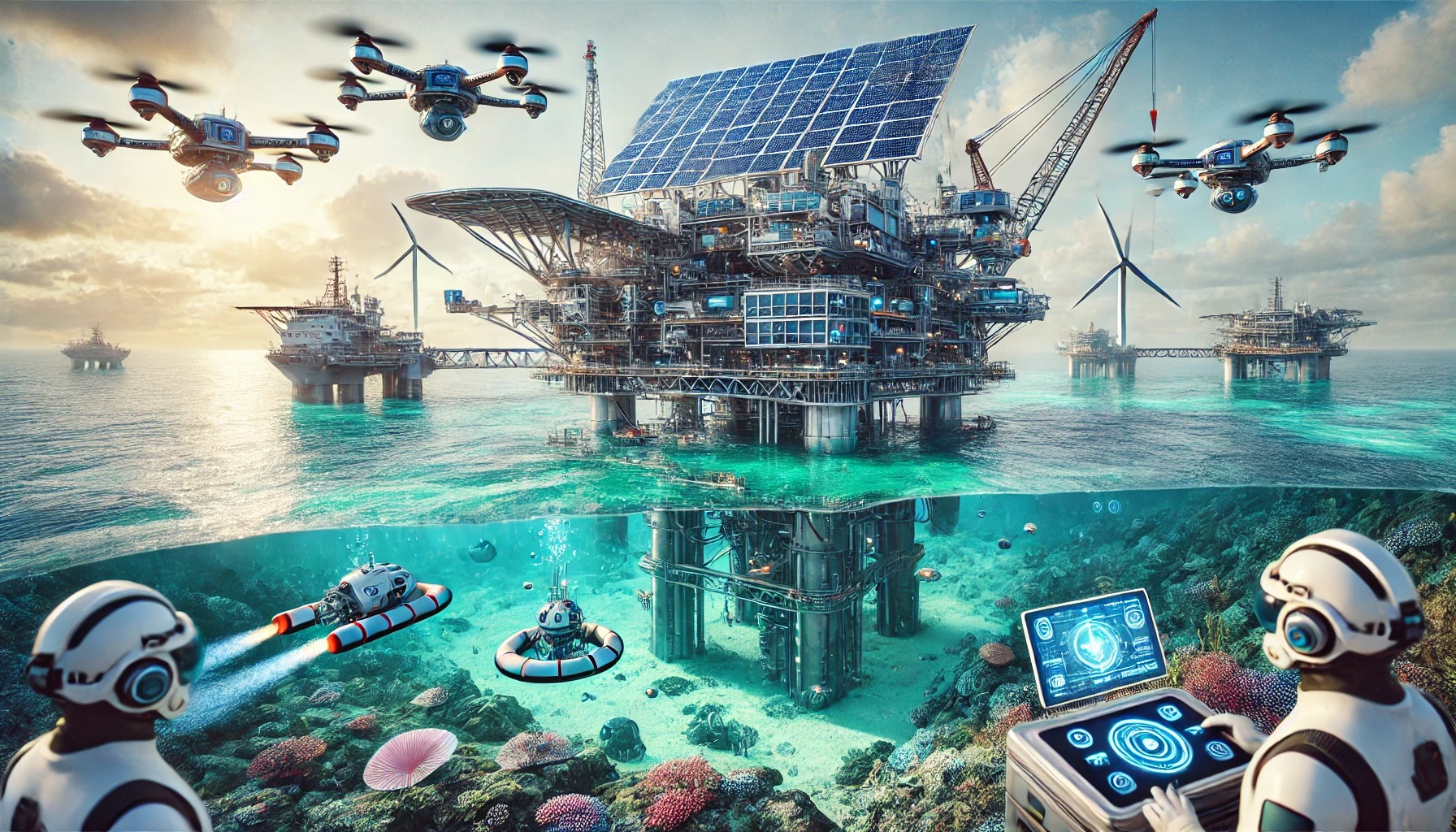A New Era of Offshore Safety: How Oil Rig Accidents Became a Thing of the Past

In the year 2035, the world woke up to an unprecedented achievement: the complete eradication of offshore oil rig accidents. This marked a turning point for environmental conservation, worker safety, and global energy production. The path to this new reality wasn’t easy, but it became a shining example of how technological innovation, international cooperation, and sustainable practices can work together to transform industries once fraught with danger.
The Turning Point: A Revolution in Offshore Technology
The foundation of this transformation began with breakthroughs in automation and artificial intelligence (AI). Decades of research into deep-sea robotics and predictive AI systems finally bore fruit. The oil industry invested in AI-driven rigs, where human error—a key cause of past disasters—was virtually eliminated. Sophisticated machine learning algorithms were able to anticipate equipment failure and potential hazards before they escalated into catastrophic events.
These rigs are now equipped with cutting-edge technology, from drones and autonomous submersibles that monitor equipment at extreme depths, to hyper-responsive AI systems capable of instant decision-making in critical moments. No longer do crews face the perilous conditions of the high seas; instead, they operate from control rooms onshore, guiding the process with precision, oversight, and data-rich insights.
Renewable Energy Integration
What’s more, this revolution didn’t happen in isolation. As the demand for fossil fuels gradually declined, oil companies embraced hybrid energy platforms. Offshore rigs were retrofitted to accommodate wind turbines and solar panels, converting once carbon-heavy operations into green energy hubs. Now, these hybrid platforms use renewable energy to power drilling and extraction processes while contributing to the grid with sustainable electricity.
By diversifying energy production, companies reduced their environmental footprint. And with fewer rigs relying solely on oil extraction, the pressure to produce at any cost diminished. This pivot toward a more sustainable, multi-faceted energy infrastructure dramatically reduced the likelihood of oil spills and other environmental disasters.
Global Cooperation and Stricter Regulations
This new era of safety didn’t come about through technology alone. International regulations took a significant leap forward as governments across the globe aligned to create stringent, unified safety standards. The creation of the Global Offshore Safety Council (GOSC) brought together scientists, engineers, and policy experts to enforce rigorous safety protocols.
All oil rigs, from the North Sea to the Gulf of Mexico, now adhere to these unified guidelines, ensuring that there’s no room for negligence. Countries that once vied for profits at the expense of safety are now part of a global network committed to protecting marine ecosystems and ensuring the safety of rig workers.
The Human Element: Skilled Workers in the Digital Age
With the rise of automated rigs, the role of offshore workers shifted dramatically. Rather than risking their lives in the field, engineers and specialists now remotely operate rigs from onshore control centers. These jobs require new skills in robotics, data analysis, and AI oversight, creating a safer and more fulfilling work environment for a new generation of oil and energy professionals.
Oil companies have invested heavily in upskilling their workforce, offering educational programs in advanced technology and environmental science. The result? A highly educated workforce that plays a pivotal role in maintaining safety, efficiency, and environmental responsibility.
The Environmental Impact: A Healthier Ocean
Perhaps the greatest victory in this new reality is the dramatic reduction in environmental impact. Gone are the days of devastating oil spills that left marine life in peril and coastlines soaked in oil. Coral reefs that had been endangered by decades of oil-related incidents are now thriving. Aquatic ecosystems once devastated by human error have been given a second chance to flourish.
Oil production is now conducted in harmony with the environment, with automated systems ensuring that every drop extracted is done so with minimal disruption to the surrounding ocean. Moreover, hybrid energy platforms contribute to the reduction of carbon emissions, slowing the advance of climate change and allowing the world to progress toward a greener future.
Looking Ahead: A Blueprint for Other Industries
The success of offshore oil rigs becoming accident-free serves as a blueprint for other high-risk industries. The lessons learned here—collaborative innovation, investment in technology, and an unwavering commitment to safety—are already being applied to fields like mining, nuclear energy, and space exploration.
We stand on the brink of a new industrial revolution, where human ingenuity and environmental stewardship work hand in hand. This new era reminds us that the most significant leaps forward often come not from small, cautious steps, but from bold visions that redefine what’s possible.
Conclusion: A Future Worth Believing In
In this world where offshore oil rig accidents are a thing of the past, humanity has proven its ability to evolve beyond old limitations. Through technology, regulation, and global cooperation, we’ve created a safer, more sustainable energy future. The ocean, once a site of risk and danger, is now a symbol of hope—a place where innovation and nature coexist harmoniously.
As we move further into this promising future, the oil rigs of today may very well be the green energy platforms of tomorrow, ensuring a world where safety, sustainability, and progress are intertwined. Offshore accidents may be behind us, but the spirit of transformation continues to push us forward.